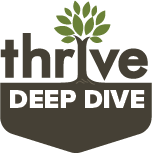Have you ever wondered how brands gain a competitive edge and establish themselves as authorities? Are you pondering how your business can enhance its online visibility? Two words – link building! And now, you’re probably wondering what is link building and how do you include it in your marketing strategy.
What Is Link Building?
Link building is the practice of creating high-quality backlinks to a website for the sole purpose of enhancing online visibility. It is a trend that has changed the dynamics of search engine optimization (SEO). 
Pre-Google days were different. Back then, search engines ranked websites mainly for their content. However, Google has revolutionized online marketing and developed better ways to increase website rankings. One of these methods includes analyzing the number of people linking to a specific page, which is known as and referred to as, building links.
Importance of Link Building
Due to the influx of online consumers, business success is almost impossible without a proper link building strategy. Link building is instrumental in determining how a page ranks on search engines. The higher the number of quality hyperlinks to a site, the higher its online visibility.
With the plethora of start-ups emerging every day, adopting link building strategies is imperative. Not only does the business become reachable, but it also helps establish it as an authority.
Link Building Strategies

Technological advancements provide a myriad of strategies to help business owners achieve online victory. However, the strategy to employ depends on the available resource, target market and business niche. For maximum results, businesses in flooded markets require fierce link building tactics, as compared to the less prominent ones.
On that note, below are some strategies business owners can implement to achieve world-class links, despite the niche.
Guest Posting
Guest posting is one of the most widely used link building strategies. It is a common tactic with small companies and other enterprises looking to establish an online presence.
Guest posting involves writing high-quality articles for websites, then creating a backlink to your website. Its popularity attests to the fact that it is advantageous to both the guest blogger and publication site. The publishing website gets new content for their target audience while the author gets referral traffic to their page, both of which are essential in increasing online visibility.
For optimal results, a guest blogger needs to find the right niche. The publication site needs to have a huge social following and should share the same audience as the target website. That way, an entrepreneur is assured their message will reach the right market.
Niche Edits
Contrary to popular belief, niche edits have been with us for a very long time, despite gaining popularity only a few years ago.
Also known as contextual links, niche edits involve the placement of hyperlinks in a previously published piece. This is unlike guest blogging, where a new article is written.
Niche edits are a very powerful link building strategy, as some articles already have traffic. It is even more beneficial if the article has pre-existing internal and external links. Niche edits are an invaluable resource to affiliate marketers and their popularity is increasing by the day.
Skyscraper Technique
With the evolution of modern marketing trends comes another link building strategy making headlines – the skyscraper technique.
This technique involves analyzing a quality article with backlinks, creating a superior piece and replicating the backlinks.
To increase the chances of success, an entrepreneur must look for a previously published high-quality article with several backlinks. Then, they need to craft a relevant, well-designed and actionable piece. From there, they can use email outreach to get the right people to link to the masterpiece.
Editorial Outreach and Digital PR
It is not uncommon for entrepreneurs to ask editors of popular websites for links at a fee. More often than not, journalists require a quote or input from trend-setters or people from a particular industry to produce a good piece. Why not gain a mention online for your contribution to this collaboration?
Acquiring editorial links involves reaching out to journalists and finding editorial opportunities that can be a source of quality backlinks. A fantastic way to find journalists is via Help A Reporter Out (HARO), and, guess what – they are already looking for you. It works as a message board for journalists needing a bit of extra help for their article and your brand can be that extra hand.
Although very labor intensive, it’s a great strategy that pays off big time when it comes to completion.
Is There a Right Or Wrong Way of Doing SEO Link Building?

Now that you know the answer to the question “What is link building?” let’s get into how to implement it. If you are tech-savvy or interested in SEO trends, chances are you have heard of white hat and black hat methodologies of building links.
To gain a better understanding, let’s look at each of these methods below:
White Hat Methodologies
Link building comes with guidelines for Google, and white hat link building methodologies are those strategies that follow these guidelines to the letter. These tactics are safe and are on par with Google’s expectations, eliminating the chances of penalties that hurt online visibility.
To be on the safe side, entrepreneurs looking to increase traffic to their pages must create quality, relevant content that appeals to their consumers. Through social media and other online platforms, there is a need to build a following that constantly engages with the brand. Additionally, they should strive to personalize client outreach through emails or other preferred messaging platforms.
White hat strategies are particularly rewarding as they do not suffer any harsh penalties for breach of guidelines. They are the best tactics for entrepreneurs looking to build a genuine and long-term connection with their target audience. However, they focus more on the long-term benefits and are not a quick-fix for business owners looking to be an overnight sensation.
Black Hat Methodologies
On the other hand, black hat link building strategies are those that violate Google’s stipulated guidelines in regards to the same. In the quest to rank higher on search engines, some webmasters employ uncouth and devious methods to trick search engines into enhancing online visibility of their pages. They take advantage of loopholes in the algorithms of search engines using advanced technologies.
One notoriously famous black hat strategy in SEO link building is known as cloaking. Cloaking refers to the practice of displaying dissimilar content to search engines and the audience. In this particular situation, when a web visitor performs a search query, they notice that what is displayed in the meta description is different from the page’s content. Another notoriously popular black hat technique is tech-savvy web owners hacking into a website, and adding backlinks without authorization from the relevant personnel.
These game plans are only seasonal. Google’s algorithm is ever-changing and is programmed to catch these schemes sooner rather than later, causing an inevitable drop in search engine rankings.
Why Links Are the No. 1 Ranking Factor and Always Will Be

An array of strategies designed to enable websites to rank higher in search engines present themselves. However, link building remains the number one factor in 2020 and beyond.
Why, you ask?
Links are effective at getting third-parties to affirm a site’s authenticity, improving user perception.
If you know a bit about search engine optimization, you are aware that Google is constantly upgrading its algorithm to improve customer satisfaction. No one knows the criteria used, but one thing is for sure: Link building takes a majority percentage of the ranking factor.
In the case of two authority websites from the same niche, the site with more quality backlinks is the one that automatically ranks higher in search engines. Quality backlinks will almost always produce exceptional results. Social media platforms and affiliate marketing are two other suitable ways to leverage link building.
Not All Links Are Created Equal – Let’s Look At Why
As much as we are talking about the perks of link building, the keyword to watch out for is quality – as in quality backlinks!
Without quality, your SEO strategy is as good as dead and typically non-existent to search engines.
Below are the basic types of links and whether or not they will hurt your business:
Do-Follow, No-Follow, Redirects and Pillow Links
In the realm of search engine optimization, do-follow, no-follow, redirects and pillow links are some of the most commonly utilized links.
Do-follow links are those that count as points on Google’s PageRank (PR) metric. They are effective at boosting a page’s ranks on the search engine results page (SERP). They are some of the most utilized links by enterprises striving to establish themselves as brands in a competitive market.
No-follow links, on the other hand, are those that do not affect a website’s rank on search engines. Bearing this in mind, it can be quite difficult for budding entrepreneurs to consider no-follow links in their marketing strategies, since they do not help the website rank. Right?
Wrong!
No-follow links were developed as a result of unscrupulous individuals who cheated their way to the top of search engine results using unethical methods. Their determination for online visibility led them to spam anyone, including authority websites like Wikipedia. In some cases, the linked content was unverified and substandard. What Google did was introduce no-follow links to avoid hurting the authenticity of authoritative sites.
As much as no-follow links do not produce any “link juice”, a well-placed no-follow link is valuable to a business. It can send a huge amount of referral traffic to a business, increasing leads and conversions.
Apart from the do-follow and no-follow links, some entrepreneurs use redirects and pillow links.
Redirect link building involves the practice of purchasing a new domain then creating hyperlinks that redirect to the main site. Additionally, pillow links are common with new business owners looking to establish their online presence. Building pillow links involves the creation of posts and on social media sites, for example, and linking these posts to your homepage. Redirects and pillow links were efficient a couple of years ago, but with the changing Google algorithm, it is hard to get to the top of SERPs, as search engines deem these practices unnatural.
Content-Based Link Building and Natural Links – What Makes Your Content “Linkable?”
Natural links are the “unicorns” of all link building strategies. As the name suggests, they are naturally occurring. There is no intervention needed from anyone in your marketing team to acquire them, and the webmasters don’t need guest blogs or any other gimmicks. They are generated when businesses and individuals link to your page because the content is relevant and appealing to their target audience. Put simply, your content is just that good.
Content-based link building is safe as it veers off manipulative ranking tactics, eliminating the risk of attracting penalties from Google’s penguin algorithms. Considering its benefits, leveraging it for SEO purposes is the best course of action.
So, how do you go about it?
The internet has a plethora of content that includes images, articles, videos, eBooks and many more. With the thousands of results available on a search query, a good majority of them are not link-worthy.
To make your content attractive to other webmasters, come up with well-researched pieces. It is quality and credible content that makes articles worthy of citations. Using high-quality visual elements is another way to get natural links to a page. Not only are they inviting, but they also complement the article, making it readable and relatable.
Furthermore, you can write about topics that are relevant to consumers and those they are likely to connect with. For instance, instead of writing an article titled “Increase Your Page Rankings Today”, be more specific and write “5 Effective Ways to Increase Your Page Rankings” or “How to Increase Your Web Presence in 5 Easy Steps”.
SEO Backlinks Diversity and Why It’s Important

As much as backlink diversity is instrumental in SEO success, it is still an underutilized link building strategy in 2020. Search engine algorithms are getting better at detecting foul play in building links, and this is where the diversity of SEO backlinks comes in.
Backlink diversity is the practice of acquiring a variety of inbound links to redirect to your webpage. However, due to the strict Google link building guidelines, this strategy should be implemented within the recommended limits to avoid being spammy and attracting penalties.
Webmasters use a combination of citations, blog comments, no-follow, do-follow and pillow links to include diversity into their link building campaigns. Link diversity makes the links look natural, escaping detection from statistical link analysis programs.
Social Signals and Their Relevance
Social signals are the total metrics of a website in terms of views, shares, likes and dislikes. They play a huge role in showcasing a site’s popularity. Social signals are essential in SEO link building strategies and have influenced how search engine giants like Google and Bing deliver results on queries from online consumers.
Social signals have gone up the ranks and are currently considered a genuine and accurate method of gauging a website’s outreach and popularity. They directly impact how a business ranks in search engines. As such, building eCommerce marketing strategies that revolve around them is imperative. Failure to do so means a business loses its competitive edge, trailing behind other market players.
Some of the most influential platforms to encourage social signals include Google My Business (GMB), Facebook, Twitter, Pinterest, Tumblr and many more. To increase social signals, a business needs to adopt various strategies namely:
• Publishing relevant and high-quality content
• Posting regularly to ensure the brand remains at the top of the various social media news feeds
• Making use of high definition videos to promote consumer engagement
• Embracing high-tech applications to monitor likes, shares and tweets
• It’s no secret that social signals influence link building tactics. With an increase in the number of social media engagements, a web page is likely to appear at the top of SERPs sooner rather than later.
Our Preferred Trust Signals – And Why They Should Be Yours, Too
Trust signals are components found on websites that assure an online consumer of the legitimacy of the site. Whether subtle or instantly recognizable, trust signals are instrumental in building trust with prospective clients. A loyal following leads to customer satisfaction, which triggers Google into establishing the website as a trustworthy site.
A couple of trust signals present themselves in online platforms. We scanned through a variety of them and came up with a few we would recommend:
• Social Media Engagement
The way a company engages with its audience on social media platforms is a big indicator of its success. The larger the following and the greater the interactions, the more genuine the business appears on Google. As such, a buzzing website is more likely to rank higher than its silent competitors.
With all these benefits, social media engagement is clearly a viable factor to consider when determining a brand’s trustworthiness, and it comes as no surprise that it is first on the list.
• Trusted Affiliations
In life, you will often be judged by the people you associate with. The same can be said for link building.
Online consumers are on a constant lookout for businesses building affiliations with authority brands. Such collaborations sit well with prospects as well as search engines.
• SSL Certification
With an SSL Certification being one of the most important aspects in the protection of server-client communication, the majority of online consumers will avoid a website without one. The same applies to websites without trust badges from reputable companies.
• Privacy Policies
The inclusion of privacy policies and terms and conditions guarantees web visitors of the protection of their sensitive information.
• About Us Page
A website that reveals information about the business allows consumers to understand their processes and better relate to them.
These are just some of the trust signals web visitors are quick to inspect the moment they land on a webpage. They are also one of the fastest ways to build a webpage’s credibility, making them a primary factor in a company’s conversion rate optimization.
Link Building for Different Marketing Goals: It’s Not Only About the Rankings
Since the inception of the Penguin update, the entire scope around link building has been revolutionized. Link building is no longer about ranking high in search engines; it bears more weight.
The evolution of online consumers has allowed for businesses to embrace link building to achieve specific marketing goals. This comes as a relief to companies in competitive niches, where ranking high on search engines requires effort and much more than link building.
Building links is advantageous to large and small enterprises in more ways than one.
Let’s delve into specifics:
Building Links for Branding
Branding is a major contributing factor to online and offline business success, and building links can help. Take guest blogging, for example: As much as its sole purpose is to drive referral traffic to the target website, it also fosters mutually beneficial relationships between the two websites.
Additionally, quality links allow businesses to establish themselves as authorities in their niche, which helps in promoting the brand.
Building Links for Traffic
It is not uncommon for webmasters to embrace backlinks as a way to get referral traffic from the publication site. This is a habitual SEO practice for business owners targeting an audience similar to that of another website. Such traffic is acquired through social media engagements and guest blogs, among others.
Building Links With Your Keyword Strategy in Mind
Keyword search is still a powerful SEO strategy and is essential in the link building process. It allows entrepreneurs to track consumer needs and patterns. Building backlinks without a proper keyword research is like shooting darts in the dark.
With a solid link building strategy, websites can rank higher for keywords relating to their niche and industry trends, always keeping the query intent front and center.
Building Links for Geo-Specific Goals

Sometimes, business owners are not looking to generally rank high on search engines, but are striving towards being the leading brand in specific geographical locations. By getting backlinks from authority pages in the region, their online local presence in these target locations grows significantly.
Building Links for Mobile App Downloads
Smartphones have revolutionized how consumers and service providers engage with each other. They offer a channel that facilitates digital interactions and eCommerce. By reaching out to industry influencers through link building, companies create mutually beneficial connections that facilitate the marketing and downloads of mobile applications.
Conclusion
Despite the complexities revolving around Google’s algorithm and manual actions by the company, backlinks remain one of the top three ranking factors for online brand visibility. Link building and off-page SEO continues to be a practice that is most helpful for brands, and it should be part of your SEO strategy when optimizing or building a new website.
Are you ready to take your ranking and traffic to the next level? Do you have questions about how to get there? Reach out to us and let’s chat about your goals, your backlink profile and how we can maximize your backlink strategy and reap the benefits.








